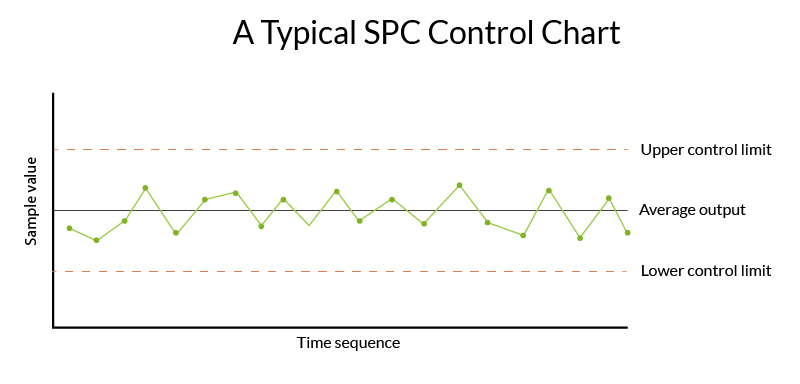Machine learning supplements SPC to solve issues during automotive part manufacturing
Last updated on October 25th, 2022
Many automotive part manufacturers use data from the production floor to guide decision-making. They often use statistical process control (SPC) and end-of-line (EOL) testing to ensure that defects don’t slip by. If a defect does occur, engineers often need to find and analyze data manually and rely on experience to focus on the relevant signals. However, the more complex the problem, the more signals there are to analyze which takes a substantial amount of time.
Although engineers can visualize the data with tools like Power BI, Ignition, and Tableau, they still need to filter it down manually and draw their own conclusions. To compound the frustration, this is usually a reactive process – after a problem occurs.
Why use statistical process control (SPC)?
Manufacturers typically use SPC to analyze processes of key features that need to fall within a certain threshold. The idea is to capture any statistical variation in your process by establishing a reasonable sampling quantity and frequency based on your capability or process study. This allows operators to react to issues if their X-bar and R-chart begin to show evidence of statistical deviation.
SPC can only show whether a signal is trending towards an upper or lower control limit which doesn’t necessarily mean that your unit is defective. And, even if your unit happens to be defective, SPC can’t tell you what’s causing the defect.

How does machine learning supplement SPC?
Machine learning looks at all of the signals impacting the component and builds connections that provide you with actionable insights. Even if your SPC charts show good statistical control and your in-process data shows good capability, the pumps, torque converters, transmissions, and other components still get end-of-line tests.
The point of using machine learning in manufacturing is not to replace SPC but rather to supplement it. Machine learning can fill in the gaps and help you answer questions like: why are my assemblies failing end-of-line testing if all the sub-components are technically within specification?
Machine learning finds connections between signals that SPC can't identify
We use machine learning to find relationships between signals and there are a lot of signals in automotive manufacturing. A single transmission can output over half a million time-series datapoints during testing. The value of machine learning is in finding relationships between all of the different signals and comparing them to the signals from all the other transmissions to find abnormalities.
We aren’t looking at the trends of one signal individually to see if it is trending towards the control limit but rather, we’re leveraging machine learning to find connections between the time series of the signals themselves and more importantly, to each other. This is simply not something SPC can do.

Machine learning helps you solve problems instead of looking for them
Machine learning enhances an engineer’s ability to leverage data and apply their experience. For example, if you’re having issues with variable throughput, machine learning can narrow down the number of possible causes by a factor of ten or more. So, an engineer can spend time solving a problem instead of looking for it.
Machine learning helps you avoid problems before they happen
The assembly line is a dynamic environment and changes happen all the time. With machine learning, manufacturing engineers can capture those changes and instead of reacting to the problems after they occur, they can proactively predict and even avoid problems before they happen.
Ready to improve part quality with a solution driven by machine learning?
We help precision manufacturers turn complex product data into actionable insights. Our machine learning and artificial intelligence (ML/AI) solutions help manufacturers of precision parts for automotive and off-highway vehicles make the right decision fast, improve product quality, reduce scrap and rework, and optimize production.
To learn more, get in touch.
Share on social: